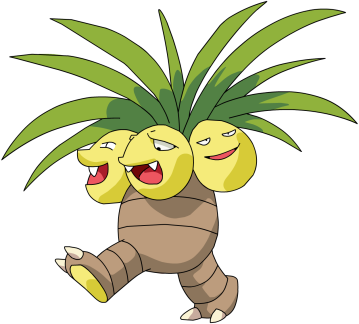Halloween is a very popular holiday. It is thought to have originated with the ancient Celtic festival of Samhain, when people would light bonfires and wear costumes to ward off roaming ghosts. In the eighth century, Pope Gregory III designated November 1 as a time to honor all saints and martyrs; this holiday, All Saints’ Day, incorporated some of the traditions of Samhain. The evening before was known as All Hallows’ Eve and later Halloween.
The Celts, who lived 2,000 years ago in and around what is now the UK, celebrated their new year on November 1. This day marked the end of summer and the harvest and the beginning of the dark, cold winter. Celts believed that on the night before the new year, the boundary between the worlds of the living and the dead became blurred. On the night of October 31 they celebrated Samhain, when it was believed that the ghosts of the dead returned to earth. To commemorate the event, Druids built huge sacred bonfires, where the people gathered to burn crops and animals as sacrifices to the Celtic deities. During the celebration, the Celts wore costumes, typically consisting of animal heads and skins, and attempted to tell each other’s fortunes. Samhain was around the time of the Roman festival honoring Pamona, the goddess of fruit trees. The goddess is often symbolized by an apple, so the fruit became synonymous with Samhain celebrations of the harvest.
By 43 A.D., the Roman Empire had conquered the majority of Celtic territory. On May 13, 609 A.D., Pope Boniface IV dedicated the Pantheon in Rome in honor of all Christian martyrs, and the Catholic feast of All Martyrs Day was established. Pope Gregory III later expanded the festival to include all saints as well as all martyrs, and moved the observance from May 13 to November 1. By the 9th century the influence of Christianity had spread into Celtic lands, where it gradually blended with and supplanted the older Celtic rites. In 1000 A.D., the church would make November 2 All Souls’ Day, a day to honor the dead. It is widely believed today that the church was attempting to replace the Celtic festival of the dead with a related, but church-sanctioned holiday. All Souls Day was celebrated similarly to Samhain, with big bonfires, parades, and dressing up in costumes as saints, angels, and devils. The All Saints Day celebration was also called All-hallows or All-hallowmas and the night before it, the traditional night of Samhain in the Celtic religion, began to be called All-hallows Eve and, eventually, Halloween.
The first American celebrations included “play parties,” public events held to celebrate the harvest, where neighbors would share stories of the dead, tell each other’s fortunes, dance and sing. Colonial Halloween festivities also featured the telling of ghost stories and mischief-making of all kinds. By the middle of the nineteenth century, annual autumn festivities were common. In the second half of the nineteenth century, America was flooded with new immigrants. These new immigrants, especially the millions of Irish, helped to popularize the celebration of Halloween nationally. Taking from Irish and English traditions, Americans began to dress up in costumes and go house to house asking for food or money, a practice that eventually became today’s “trick-or-treat” tradition.
In the late 1800s, there was a move in America to mold Halloween into a holiday more about community and neighborly get-togethers than about ghosts, pranks and witchcraft. At the turn of the century, Halloween parties for both children and adults became the most common way to celebrate the day. Because of these efforts, Halloween lost most of its superstitious and religious overtones by the beginning of the twentieth century. By the 1920s and 1930s, Halloween had become a secular, but community-centered holiday, with parades and town-wide parties as the featured entertainment.Between 1920 and 1950, the centuries-old practice of trick-or-treating was also revived. Trick-or-treating was a relatively inexpensive way for an entire community to share the Halloween celebration.

The American Halloween tradition of “trick-or-treating” probably dates back to the early All Souls’ Day parades in England. During the festivities, poor citizens would beg for food and families would give them pastries called “soul cakes” in return for their promise to pray for the family’s dead relatives.
On All Hallow’s Eve, the Irish hollowed out turnips, rutabagas, gourds, potatoes and beets. They placed a light in them to ward off evil spirits and keep Stingy Jack (a drunk ghoul) away. These were the original Jack O’Lanterns. The Irish immigrants in America quickly discovered that Pumpkins were bigger and easier to carve out. So they used pumpkins for instead.
Bats were seen as witches’ familiars, and seeing a bat on Halloween was considered to be quite an ominous sign. One myth was that if a bat was spotted flying around one’s house three times, it meant that someone in that house would soon die. Another myth was that if a bat flew into your house on Halloween, it was a sign that your house was haunted because ghosts had let the bat in.
The stereotypical image of the haggard witch stirring a magical potion in her cauldron actually stems from a pagan goddess known as “the crone,” who was honored during Samhain. The crone was also known as “the old one” and the “Earth mother,” who symbolized wisdom, change, and the turning of the seasons. Today, the kind, all-knowing old crone has morphed into the menacing, cackling witch.
The traditional Halloween colors of orange and black actually stem from the pagan celebration of autumn (Mabon or the Autumn Equinox) and the harvest, with orange symbolizing the colors of the crops and turning leaves, while black marks the “death” of summer and the changing season.
I love Halloween. I love decorating and handing out candy and eating candy! It’s fun to go to Halloween parties and dress up.
References Cited
http://www.history.com/topics/halloween/history-of-halloween
http://www.pumpkinnook.com/facts/jack.htm
http://www.livescience.com/16677-halloween-superstitions-traditions.html






























